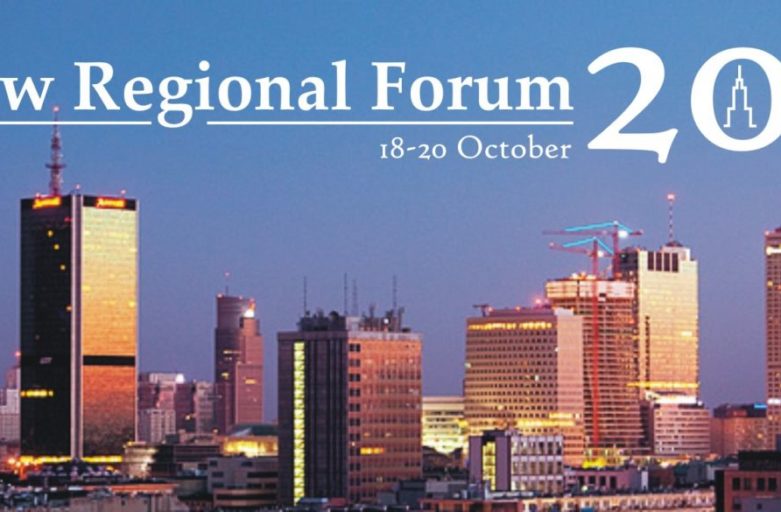The Warsaw Regional Forum is an international conference organized on a regular basis once every two years (biennially) by the IMAJINE’s partner Institute of Geography and Spatial Organization – Polish Academy of Sciences (IGSO PAS) and Polish Ministry of Economic Development.
The principal topic of the 2017 conference held in Warsaw in October 2017 was concentrated around flows of capital, information, technology, notions, sounds, and symbols (Castells 1997). These flows have become a process that shapes the economy, politics and primarily the space.
IMAJINE project leader Professor Michael Woods presented the paper “Regional Inequalities and Spatial Justice in a Europe of Flows”, as a keynote speech.
Here you may read the abstract of the keynote speech:
Regional inequalities in Europe have been conventionally measured, mapped and addressed in policy through the framework of bounded geographical regions. Organizations such as Eurostat have produced statistical databases for indicators such as GDP per person, household income, unemployment rates and population change, calculated at the scale of pre-defined regions, which have been used to measure inequalities and to identify so-called ‘lagging regions’. These observed inequalities have in turn been addressed in EU and national policies through programmes such as the European Regional Development Fund that have targeted bounded regions, including for example the allocation of Convergence Funding to regions with a GDP per capita of less than 75% of the EU average. However, these approaches are arguably too crude, ignoring intra-regional differences, implicitly assuming that levels of wealth change precipitously at regional borders, and pays no attention to the dynamic connections between regions.
As such, this presentation aims to explore alternative ways of envisaging and addressing spatial inequalities in Europe. It draws on initial work for a new Horizon 2020 project, IMAJINE (Integrative Mechanisms for Addressing Spatial Justice and Territorial Inequalities in Europe) to investigate two main themes.
The first part of the presentation considers how territorial inequalities might be approached through the perspective of a Europe of flows. It discusses how inequalities between places are produced, reflected and even ameliorated through and in various flows of people, materials, capital, and power. For instance, inequalities may be produced through the flow of capital between different regions through commercial transactions, but also addressed through redistributive flows of taxation and public funding. Similarly, migration flows may reflect perceived inequalities in wealth or opportunity between sending and receiving regions, but migration could also be an informal means of redistribution between regions through the flow of remittances. It is suggested that this perspective permits a more complex yet more accurate picture to emerge, emphasizing the interconnection of specific places and regions, variations in patterns between different indicators, and intra-regional details.
The second part of the presentation then examines how the patterns and dynamics of inequalities revealed through a flows perspective might be addressed through policy mechanisms. For this, it draws on the concept of ‘spatial justice’, which has recently started to attract attention in EU policy discourse. Spatial justice, it is suggested, is concerned not only with the measurement and mapping of territorial inequalities, but also with questions around how inequalities are produced (including by policy) and perceived, and how they consequently feed into political behaviour. In particular, it is argued that the principle of spatial justice could underpin a new approach in EU policy that might seek to address territorial inequalities by focusing less on the outcomes captured in regional statistics, and more on the dynamic inter-regional interactions and flows that produce, reproduce and mitigate inequalities between places.


